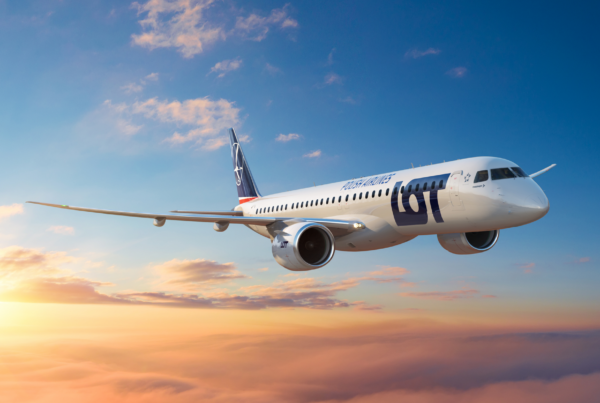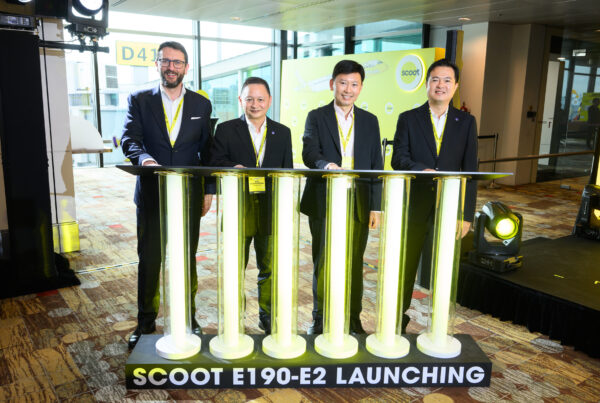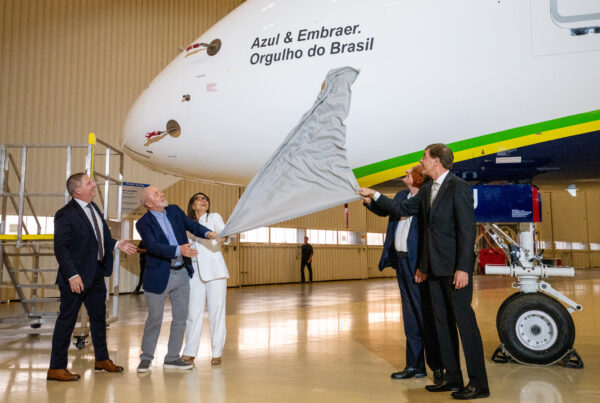Japanese regional carrier Hokkaido Air System has signed a Memorandum of Understanding (MoU) for two ATR 42-600s, with an option for a third, while ATR has also signed a further MOU with Colombian airline EasyFly for five ATR -600 series aircraft.
Hokkaido, the subsidiary of the JAL Group will take delivery of its first two turboprops in November 2019 and start operating them in 2020, replacing its existing fleet of 30-seater Saab 340s with the new 50-seaters. Sister company JAC already operates nine ATRs in a 46-seat configuration, although the configuration for Hokkaido has not yet been decided.
Speaking on the third day of the Farnborough Airshow, Yoichiro Kuwano, Hokkaido’s president, said: “The ATR 42-600 benefits from a wide cabin, comparable to that of medium-sized aircraft and will significantly improve cabin comfort for our passengers. Also the aircraft has extensive experience with operations in cold winter, which will increase the reliability of the operation in cold Hokkaido. With this new aircraft and the safe operation system we’ve established, we will continue to provide reliable and comfortable travel to local businesses and communities.”
ATR CEO, Christian Scherer, stressed the significance of the airline being able to replace the older 30-seater aircraft with the larger ATRs. “These 50-seaters will still, with 20 more seats than Hokkaido’s current aircraft, have operating cost signatures that are better than the 30-seaters. That’s progress.”
Hokkaido began operations in 1998 and currently operates three Saab 340Bs, with 26 daily departures on five routes between Sapporo-Okadama and Rishiri/Kushiro/Misawa, Misawa/Hakodate and Okushiri, based in Sapporo-Okadama airport.
EasyFly signs for five
EasyFly signed its MoU for five ATR -600 series aircraft – three 72-600s and two 42-600s. The regional carrier became an ATR operator in 2014 when it began the progressive replacement of its fleet of British Aerospace Jetstream 41 aircraft.
The new 72-600s will mainly serve growing point-to-point operations from the hub of the northern city of Bucaramanga. The 42-600s will be used to further expand current operations.
EasyFly’s president, Alfonso Avila, said: “EasyFly has experienced double-digit traffic and revenue growth every year since the incorporation of ATR aircraft into our fleet and we intend to continue our development by acquiring both the ATR 42-600 and 72-600.”
Scherer added: “Colombia’s domestic market still offers room for the development of point-to-point operations and EasyFly will continue to satisfy this demand, meeting the needs of its passengers and increasing connectivity.”
EasyFly began operations in 2007, and currently operates seven ATR 42-500s, three 42-600s and six Jetstream 41s from its main base at Terminal Puente Aéreo at El Dorado Airport, Bogotá.
50-seater resurgence
At the Farnborough Airshow, Scherer spoke in a wide-ranging briefing about what he believes will be “a resurgence in demand for 50-seater aircraft,” with growth potential represented by the general upgrading of older 30-seater aircraft, encapsulated by its recent deal with Silver Airways. The regional carrier will start operating the 42-600 later this year as the US launch customer.
ATR has been displaying one of Silver’s distinctive flamingo-pink 42-600s on its static display all this week at the show. Silver has leased 20 initially via Nordic Aviation Capital, and will receive the first eight this year.
“We are trying to show that we can take an old 30-seat Saab and replace it with a new 46-seat ATR, and fly the same line with the same direct cost as before, with the airline essentially getting 20 extra seats for free,” said Scherer.
He also highlighted the growth potential in new markets such as China, where he “can see 300 ATRs flying in the next 20 years” once the Chinese airworthiness authorities and EASA have finalised their discussions on their bilateral safety agreement. China’s CAC recently accepted ATR’s application for certification, he said, “which is encouraging.” He expects ATR’s -600s to be active in China within the next year or two following eventual certification, with the country “a vast market” for regional aviation.
The company is also nearing the launch of its STOL (Short Take-Off and Landing) version of its turboprop, he continued. This will give it the capability to land on much shorter runways, making it a replacement option for much smaller aircraft. “The 42-600 stands in front of a renaissance that we find very exciting,” he added. ATR currently has three years of order backlog.
Written by: Mark Thomas
If you have any feedback about this article or would like to suggest a topic for future investigation, please contact us.







